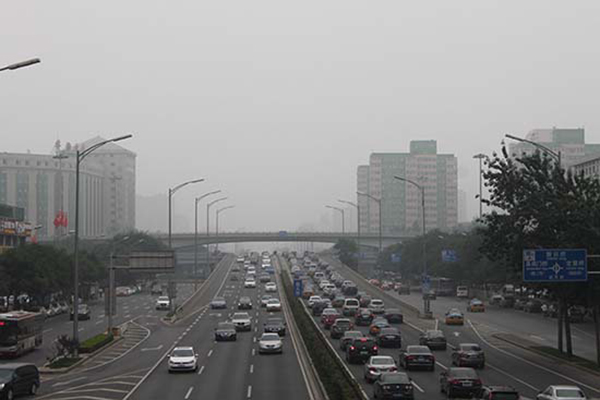Summer smog will become common, experts say
 0 Comment(s)
0 Comment(s) Print
Print E-mail China Daily, July 10, 2013
E-mail China Daily, July 10, 2013
The spell of thick smog that blanketed Tian'anmen Square for 18 days in June will not be a thing of the past, according to weather experts. Yan Peng, an atmospheric chemistry researcher of the Meteorological Observation Center of the China Meteorological Administration, and other researchers said the smog this summer may become a common occurrence if the high humidity remains steady.
 |
|
Beijing is shrouded in heavy smog on June 30, 2013. [File photo] |
"High humidity may cause low visibility, worsening smog," Yan said.
Smog, he said, is more common in the summer than in the winter and autumn seasons, citing CMA observations over the past 10 years.
According to the CMA, the number of smoggy days per month in Beijing soared from July to August. Over the past decade, each month had an average of about 15 days of smog.
He said smog depends on the concentration and properties of aerosols, microscopic particles that scatter or absorb light, in the atmosphere.
"It means in a winter day with particulate matter 2.5 at 100 micrograms per cubic meter and some relative humidity, smog may not form, but if it happens in the summer, heavy smog may form due to the high hygroscopic (moisture absorbing) growth of aerosols in the summer," Yan said.
Particulate matter is usually characterized by size because of the different health effects associated with its size. Particulates that measure 2.5 micrometers are mostly caused by fuel combustion and can be inhaled into the lungs, causing harm to one's health.
The brownish smog in late June, Yan said, had PM 2.5 readings reaching nearly 300 micrograms per cubic meter, creating very low visibility.
"But the summer smog doesn't mean air pollution is worsening," Yan said, explaining that the city's pollutants - a mix of industrial discharge, vehicle exhaust and construction dust - have been increasing for decades.





